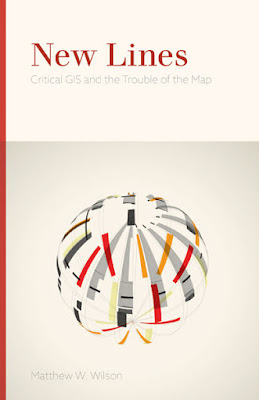Geographic Representation NOW at Harvard GSD
The workshop looks to be fascinating. The program, including my abstract, follows.
geographic representation now
a colloquium of the harvard university graduate school of design
11.11.11 13:00-18:00 stubbins room gund hall
13:00
introductions (Charles Waldheim, GSD)
13:30
Design, Mobility, Ubiquity (Paul Cote, GSD)
Michael Flaxman, Massachusetts Institute of Technology
Jonathan Reades, University College London
15:00
Critical and Radical Cartographies (Neil Brenner, GSD)
Matthew Wilson, University of Kentucky
Lize Mogel, New York
16:30
Mapping New Geographies (Felipe Correa, GSD)
Sarah Williams, Columbia University
Maria Arquero de Alarcon, University of Michigan
17:30
conclusions (Rahul Mehrotra, GSD)
Design, Mobility, Ubiquity (Paul Cote, GSD)
Michael Flaxman, Massachusetts Institute of Technology
“Considering the Role of Geographic Representations and Evaluations in Design Processes”
Over the last several decades, theoretical and practical work in planning has mostly concentrated on procedural concerns such as identifying and engaging appropriate stakeholders, and organizing inclusionary processes participation and deliberation. Richard Klosterman has termed this as a shift from "planning for the public" to "planning with the public." While this could now be characterized as a strong professional consensus amongst planners, such procedural framings leave open and ambiguous the role of both art and science in imagining and constructing desirable futures. GeoDesign is an emerging formulation which seeks to increase the creative productivity of design iteration within trans-disciplinary processes engaging designers, technical specialists and interested stakeholders. It does so by making design propositions and their multiple evaluations central to a participatory process, and by providing a technical mechanism which supports this. Specifically, it develops digital artifacts which support both artistic and scientific purposes by embedding geographic information and by separating semantics from visual representation. This mechanism for developing shared representations has been well-proven in other contexts, but its acceptability within a design context remains an open and important question.
Jonathan Reades, University College London
“Geography 2.0: can 'big,' 'open' data inform design?”
We appear to be at a moment of transition between mapping as the preserve of increasingly a select few, and an era of openness in which the public becomes sophisticated in the creation and interpretation of geographical representations. Although this change may discomfit some in the design disciplines, it also represents an enormous opportunity to engage with the public in new ways: spatial and temporal 'literacy', especially through visualisation, offers new avenues for connecting individual activity to societal outcomes. Drawing in part on my own research using telecommunications and transportation data, I will highlight some the early findings from this exciting fusion of geography, design, and computer science. And we should also note that the availability of large volume behavioural data sets will empower theorists, practitioners and policymakers in the design disciplines to explore complex interactions between the local, regional, and global contexts. For the first time, it is becoming possible to explore how a given spatial unit such as a building, block, neighbourhood, or even region, relates to the units above, adjacent to, and below it. In other words, we can now consider complex multi-scalar interactions within and between spaces. Furthermore, we can consider how the flow of people and groups through these spaces and scales will change over time, incorporating recurring daily, weekly, and seasonal flows -- as well as exceptional events -- into our understanding of place-based dynamics and mobilities. Collectively, we can use these advances to provide relevant, timely, accessible, and appropriate feedback to policymakers, practitioners in the design disciplines, and citizens, empower each with the capacity to make choices about the future.
Critical and Radical Cartographies (Neil Brenner, GSD)
Matthew Wilson, University of Kentucky
"A present history of critical GIS"
Critical geographic information systems is an area of research positioned at the intersection of critical geography and geographic information science, drawing together technical capabilities for geographic representation and analysis with the critical capacities of social theory, more-than-human geographies, and the digital humanities. Critical GIS scholarship is particularly influenced by the work of participatory action researchers, the histories of cartography and geographic information technologies, and the inclusion of alternative (radical, local, everyday) knowledges. It inherits a focused attention to the social implications of geospatial technologies from the GIS and Society tradition while being cognizant of the technical debates and intricacies of GIScience. In this presentation, I sketch the present history of critical GIS. That is, I reflect upon specific engagements in Geography that currently situate critical GIS, and outline the more pressing aspects of its research agenda. I then introduce critical mapping efforts at the University of Kentucky, including work around public engagement, the mapping of user-generated content, and open data advocacy in local government.
Lize Mogel, New York
“Radical Cartography: Artists making activist maps”
Radical cartography is a practice that uses maps and mapping to promote social change, and is part of a cultural movement that cuts across boundaries of art, geography, and activism. I will present examples of cartographic work by artists who create maps to raise awareness of social justice issues. These maps are both artworks and part of a larger activist research and practice. Maps, as inherently political documents, are an ideal form to visualize the social ramifications of spatial practices. Artists play with cartographic conventions including geographic shapes, way finding symbols, and aerial views in order to delve into issues from garbage to globalization, migration to extraordinary rendition. I will look at how these projects circulate inside and outside the cultural sphere. While mapping in cultural practices has expanded into technological and performative realms, the focus here is on a traditional aspect of the map as a work-on-paper. This underscores artists’ use of the “low-tech,” paper map as an accessible, aesthetic, and informational form that can be used for public address.
Mapping New Geographies (Felipe Correa, GSD)
Sarah Williams, Columbia University
"Data Sequence: Communicating Science, Society, and Policy of Places by Exposing the Invisible”
This history of the use of data to analyze and design the places we live has been contentious. We currently store and collect more data than ever before, causing a new era of data enthusiasm. Mining this data deluge to create visualizations can help us expose issues that might not have otherwise been seen. I will use the strategies of the Spatial Information Design Lab, to illustrate how spatial data visualizations can have a positive impact on the places we live. I will frame this discussion by briefly highlighting Urban Strategists' historically complex relationship with data visualizations and make a call for future possibilities that are both visually compelling and ethically developed.
Maria Arquero de Alarcon, University of Michigan
“Cartographies of Concern”
This presentation explores the agency of interdisciplinary collaboration towards a generation of speculative representations within regions of the Great Lakes Basin. Understanding the territory as a complex device where many opposing interests overlap, this work examines issues of design intervention, performance, and representation, reflecting its manifold implications in both the academic and professional spheres. The presentation positions Detroit as a testing ground to consider urban storm water management as a means to develop generative design strategies that encourage nested, scalar approaches. The tools for imaging the vast geography of the city provide a metric for analysis and recalibration of the physical, regulatory and cultural forces that shape the contemporary urban condition. At the core of this trans-scalar inquiry is a research methodology that privileges the use of representational tools to transition from data to informed design decisions, and enables cultural imagination to project visions for Detroit’s future urbanism through the lens of water.
Michael Flaxman
is assistant professor of urban technologies and information systems at the Massachusetts Institute of Technology.
http://dusp.mit.edu/p.lasso?t=5:1:0:0&detail=mflaxman
Jonathan Reades
is research associate in the centre for advanced spatial analysis at University College London.
http://www.casa.ucl.ac.uk/people/person.asp?ID=226
Matthew Wilson
is assistant professor of geography at the University of Kentucky.
http://www.uky.edu/~mwwi222/
Lize Mogel
is an artist based in New York.
http://www.publicgreen.com/projects/
Sarah Williams
is adjunct assistant professor and director of the spatial information design lab at Columbia University.
http://www.arch.columbia.edu/users/sw2279columbiaedu
Maria Arquero de Alarcon
is assistant professor of architecture and urban planning at the University of Michigan.
http://www.tcaup.umich.edu/faculty/directory/?sel=222



Thank you for sharing the best information of gis.I can sure this can help to update my knowledge.I hope this can help me to crack GIS Jobs in Hyderabad.
ReplyDelete